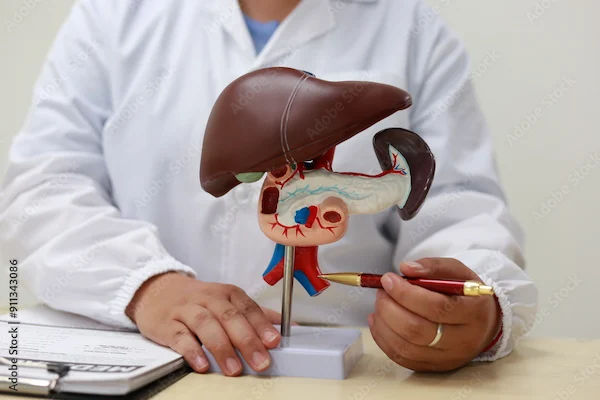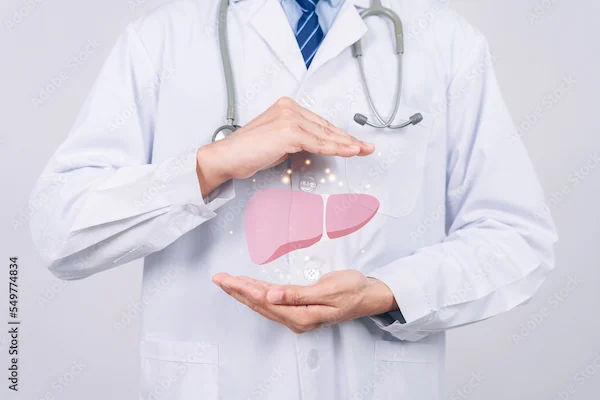World Hepatitis Day
Learn about World Hepatitis Day, its significance, and efforts to raise awareness about hepatitis. Discover prevention strategies, diagnosis methods, and treatment options to combat viral hepatitis and improve global health.

Written by Dr.Sonia Bhatt
Last updated on 3rd Jul, 2025

World Hepatitis Day, observed annually on 28th July, serves as a crucial opportunity to raise awareness about hepatitis, promote global efforts to combat the disease, and encourage active engagement from individuals, organisations, and governments. The day also underscores the need for a stronger global response to hepatitis, as outlined in the World Health Organization’s Global Hepatitis Report of 2017. The date was chosen to honour the birthday of Dr Baruch Blumberg, a Nobel Prize-winning scientist who discovered the hepatitis B virus (HBV) and developed both a diagnostic test and a vaccine for it.
Understanding Hepatitis
Hepatitis is a group of viral infections that cause inflammation of the liver, and understanding the types, transmission methods, and causes is essential for effective prevention and management of the disease.
1. What is Hepatitis?
Hepatitis refers to the inflammation of the liver, typically caused by viral infections. It can result in both acute and chronic conditions, potentially leading to severe liver damage, cirrhosis, and even liver cancer if left untreated.
2. Types of Hepatitis
There are five main types of hepatitis viruses: A, B, C, D, and E.
Hepatitis A is a highly contagious viral infection transmitted through contaminated food or water.
Hepatitis B is spread through contact with infected bodily fluids, such as blood, semen, and saliva.
Hepatitis C is primarily transmitted through blood-to-blood contact and is often chronic.
Hepatitis D only occurs in those infected with hepatitis B and is transmitted through blood.
Hepatitis E is typically spread through contaminated water, similar to hepatitis A, and is common in areas with poor sanitation.
3. Transmission and Causes of Hepatitis
Hepatitis is primarily spread through direct contact with an infected person’s blood or bodily fluids, unsanitary practices, contaminated food or water, and, in some cases, from mother to child during childbirth.
Symptoms of Hepatitis
If you have chronic hepatitis, such as hepatitis B or C, you may not experience symptoms until significant liver damage occurs. In contrast, those with acute hepatitis often develop symptoms shortly after contracting the virus.
Common symptoms of infectious hepatitis include:
Fatigue
Flu-like symptoms
Dark urine
Pale stools
Abdominal pain
Loss of appetite
Unexplained weight loss
Yellowing of the skin and eyes, which may indicate jaundice
Diagnosis of Hepatitis
Accurately diagnosing the cause of hepatitis is essential for determining the appropriate treatment. Doctors typically conduct a series of tests to confirm the diagnosis.
1. History and Physical Exam
To diagnose hepatitis, your doctor will begin by taking a detailed medical history to identify any potential risk factors.
During a physical examination, your doctor may gently press on your abdomen to check for pain or tenderness. They will also examine the liver for any swelling and look for yellowing in your skin or the whites of your eyes, which may indicate jaundice.
2. Liver Function Tests
Liver function tests involve blood samples to assess how well your liver is functioning. Abnormal results from these tests may be the first sign of liver issues, particularly if there are no physical signs of liver disease. Elevated liver enzyme levels can indicate liver stress, damage, or dysfunction.
3. Other Blood Tests
If your liver function tests are abnormal, your doctor will likely order additional blood tests to determine the cause. These tests can help detect the presence of hepatitis viruses or identify antibodies produced by your body to fight off infection. Blood tests can also be used to check for autoimmune hepatitis, where the body's immune system attacks the liver.
4. Liver Biopsy
To evaluate liver damage, doctors may recommend a liver biopsy. This procedure involves removing a small sample of liver tissue. A needle is typically inserted through the skin to obtain the sample, guided by ultrasound, meaning surgery is not required. The biopsy helps determine the extent of liver damage caused by infection or inflammation.
5. Ultrasound
An abdominal ultrasound uses sound waves to create images of the organs inside your abdomen. This test provides a close-up view of the liver and surrounding organs, allowing your doctor to identify:
Fluid accumulation in the abdomen
Liver damage or enlargement
Liver tumours
Gallbladder abnormalities
Occasionally, the pancreas may also be visible on ultrasound images. This test can be instrumental in understanding the cause of abnormal liver function.
Global Statistics and Facts
Global Deaths: An estimated 1.3 million people died from chronic viral hepatitis B and C in 2022, equating to around 3,500 deaths per day.
Prevalence: Approximately 254 million people worldwide are living with hepatitis B. Around 50 million people are living with hepatitis C globally.
New Infections: An estimated 6,000 new cases of viral hepatitis occur every day.
Undiagnosed Cases: A significant number of individuals remain undiagnosed, particularly in many low- and middle-income countries.
Treatment Gaps: Despite the availability of effective treatments, the number of people receiving proper treatment for hepatitis remains alarmingly low.
Available Interventions: High-impact interventions, such as an effective cure for hepatitis C and vaccines for hepatitis B, are available but need to be more widely accessible to reduce infections, prevent cancers, and save lives.
Hepatitis Prevention
Tips to prevent hepatitis:
1. Vaccines:
Hepatitis A: A vaccine is available to prevent hepatitis A (HAV). It is typically given in two doses, starting at age 12 to 23 months, and can also be administered to adults.
Hepatitis B: A vaccine for hepatitis B (HBV) is recommended for all newborns, with a series of three doses given over the first six months of life. It is also recommended for healthcare and medical personnel. The hepatitis B vaccine can also prevent hepatitis D.
Hepatitis C & E: Currently, there are no vaccines available for hepatitis C or E.
2. Reducing Exposure:
1. Hepatitis A and E: These viruses can be contracted through contaminated water or food. Practising good hygiene and avoiding the following when travelling to regions with high prevalence of hepatitis is crucial:
Local water and ice
Raw or undercooked shellfish and oysters
Raw fruits and vegetables
2. Hepatitis B, C, and D: These viruses spread through bodily fluids. To reduce risk:
Never share needles, razors, or toothbrushes
Avoid contact with spilled blood
Use barrier methods such as condoms and dental dams during sexual activity to reduce transmission through sexual contact.
Treatment Options
Treatment options will vary by the type of hepatitis you have and whether the infection is acute or chronic.
1.Hepatitis A:
Short-term illness, often requiring no specific treatment.
If symptoms cause discomfort, bed rest may be recommended.
For vomiting or diarrhoea, a dietary program to maintain hydration and nutrition may be advised.
2.Hepatitis B:
No specific treatment for acute hepatitis B.
Chronic hepatitis B requires antiviral medications, which can be costly and may last for months or years.
Regular medical evaluations and monitoring are necessary to check the effectiveness of the treatment.
3.Hepatitis C:
Antiviral medications treat both acute and chronic hepatitis C.
Chronic hepatitis C often requires a combination of antiviral drug therapies.
Individuals with cirrhosis or liver disease may require a liver transplant.
4.Hepatitis D:
Pegylated interferon alpha is used for treatment but may have severe side effects.
Not recommended for individuals with cirrhosis, psychiatric conditions, or autoimmune diseases.
5.Hepatitis E:
No specific medical therapies available.
The infection is typically acute and resolves on its own.
Doctors recommend rest, hydration, proper nutrition, and avoiding alcohol.
Pregnant women with hepatitis E need close monitoring and care.
Importance of World Hepatitis Day
World Hepatitis Day plays a crucial role in bridging the gap in awareness, treatment, and prevention efforts. It brings global attention to the hepatitis burden and provides a platform for advocating for stronger public health policies, increased funding for hepatitis programs, and better access to healthcare services. The day is also a call to action for governments to meet the World Health Organization’s global elimination goals for hepatitis by 2030.
Conclusion
World Hepatitis Day serves as an essential reminder of the ongoing fight against hepatitis and the need for increased awareness, prevention, and treatment. By addressing the gaps in testing, treatment, and access to care, we can work towards the global goal of eliminating hepatitis and reducing its impact on communities worldwide.
Consult Top Hepatologist
Consult Top Hepatologist

Dr. Srinivasa Reddy
Hepatologist
12 Years • MBBS, MD (General Medicine), DM (Hepatology),ASGE
Hyderabad
Myra Liver & Gastro Care, Hyderabad

Dr. Sushith C
General Physician
2 Years • MBBS
Bengaluru
PRESTIGE SHANTHINIKETAN - SOCIETY CLINIC, Bengaluru

Dr. E Prabhakar Sastry
General Physician/ Internal Medicine Specialist
40 Years • MD(Internal Medicine)
Manikonda Jagir
Apollo Clinic, Manikonda, Manikonda Jagir
(125+ Patients)

Dr. Akshatha Manjunath
General Surgeon
8 Years • MBBS, MS
Bangalore
Apollo Clinic Bellandur, Bangalore



.webp)
